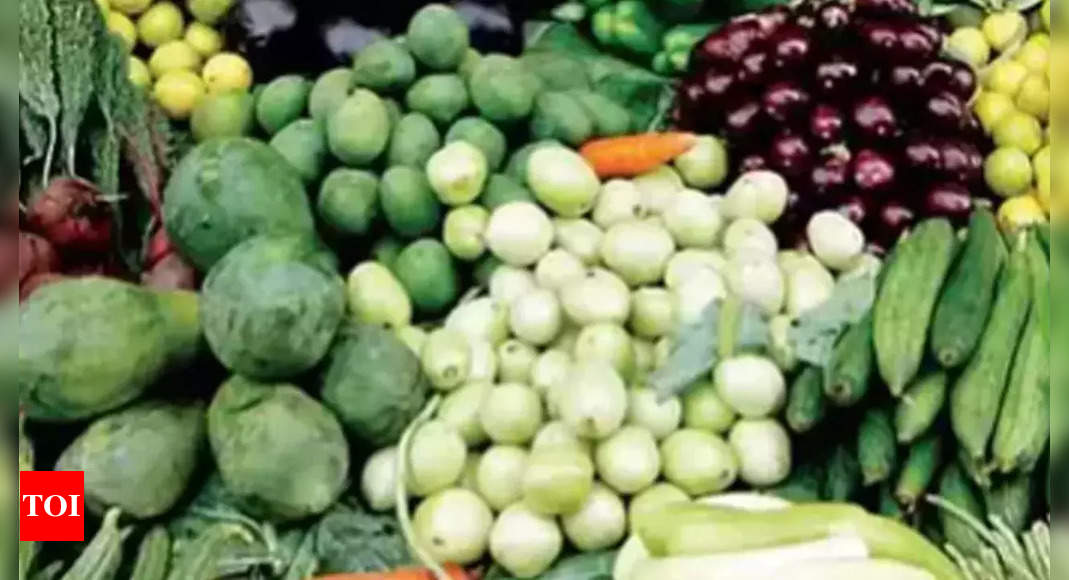Classified AdsDirectoryPhotos of the DayContact UsDonate
![]()
![]()
![]()
Free TrialSubscribeSign In
Last updated 11/26/2021 at 1:48pm
SAN DIEGO – Residents of San Diego County will soon be able to recycle food waste under SB 1383. Holiday meal planning is an excellent time to think about reducing food waste while enjoying the deliciousness of the season.
Food is the single largest material disposed of in U.S. landfills today, amounting to each person tossing an average of 20 pounds of food per month into the trash at a cost of approximately $1,500 per year, per family. This wasted food also wastes money, time, labor, transportation, water and land used in food production. Food also decomposes anaerobically (without oxygen) in landfills releasing methane gas, a driver of global climate change that is up to 86 times more potent in trapping heat than carbon dioxide.
This might not be the most appetizing thought when planning for holiday festivities, but it gets worse between Thanksgiving and New Year’s Day. Americans waste 25% more food over the holidays than the rest of the year.
In California, there is a solution on the horizon to curb the effects of greenhouse gasses caused by food waste. A state law (SB 1383) will require everyone in San Diego County to recycle organic waste, including food waste, beginning in 2022. Local municipalities and waste haulers will have information about organic waste recycling in their area.
The organic waste recycling process will greatly reduce greenhouse gasses and produce useful compost, mulch and fertilizer depending on the process used to recycle organics.
However, this beneficial addition to our waste services should not be a reason to stop reducing food waste, considering about 40% of all food produced in the U.S. is thrown out.
“While recycling food into products that feed the soil is an outstanding step forward, we are concerned food waste may not decrease, or worse, increase because we can feel better about throwing it in an organics recycling bin,” said a rep from ILACSD. “Like all the other products we buy, food does not need to be recycled if it’s not wasted in the first place.
Follow these simple tips from the County of San Diego and I Love A Clean San Diego to save money and help the environment while enjoying delicious holiday meals.
Cook and serve with a plan
The easiest way to reduce food waste during the holidays is to buy and prepare the right amount of food in the first place. Save the Food hosts a tool to help save money and time while reducing food waste. Their Guest-imator helps create a menu based on how many people are attending the holiday feast. Try it out at https://savethefood.com/guestimator.
Once the home chef knows roughly how much food is needed, they can create a detailed shopping list and stick to it. This will prevent getting sucked in by holiday displays’ appealing sales throughout the store, sometimes causing excessive purchases that may not be needed and may not actually be eaten.
When shopping for ingredients, opt for items in recyclable packaging to further minimize unnecessary waste. Learn how to Recycle Right at https://www.sandiegocounty.gov/content/sdc/dpw/recycling/RecycleRight.html.
Shop at local farmers’ marketsif(typeof __ez_fad_position != ‘undefined’){__ez_fad_position(‘div-gpt-ad-villagenews_com-medrectangle-4-0’)};
Visit one of the 36 certified farmers’ markets in San Diego County and buy local, unpackaged produce directly from regional farmers. Doing so cuts down on packaging, transportation and benefits the farmer directly while providing you with fresh ingredients.
Embrace all foods
When shopping, most people select the best looking produce, meaning the “ugly” fruits and vegetables are often left on the shelves. If these items are not sold in time, they may be destined for the landfill. This wasted produce has the same vitamins and nutrients as their “prettier” counterparts, but is not chosen simply because of looks. Give all produce a chance when at the grocery store or farmers’ markets, especially if the chosen produce is part of a larger dish.
Go for plant-based meals
Did you know meat requires almost eight times more water per calorie than most vegetables? Incorporating more plant-based foods into holiday celebrations, such as green bean casserole, lentil shepherd’s pie, and stuffed peppers, can cut the environmental cost of meals significantly. Find more plant-based holiday recipes at https://www.plantbasedcooking.com/vegan-sides-mains-thanksgiving/.
Shrink serving sizes
During the meal, reduce portion waste by using smaller dishes and smaller serving spoons – seriously, it works! People can always come back for seconds.
Anticipate yummy leftovers
Having a plan for leftovers is another way to ensure that the food prepared is eaten. After all, half the goodness of holiday food is in the delicious leftovers the next day. Provide containers for guests to take remaining food home, freeze leftovers for a later date, or use those leftovers in creative ways.
Check out https://cleansd.org/2021/11/05/zero-waste-thanksgiving/ for more tips.
Visit WasteFreeSD.org for more information, including how to keep fruits and vegetables fresh longer and for donation locations for regional food pantries in local communities. Currently, about one in eight people in San Diego County are food insecure.
111 W. Alvarado St.
Suite 200
Fallbrook, CA 92028
Ph: (760) 723-7319
© 2021 Reeder Media, Inc.
Powered by ROAR Online Publication Software from Lions Light Corporation
© Copyright 2021




